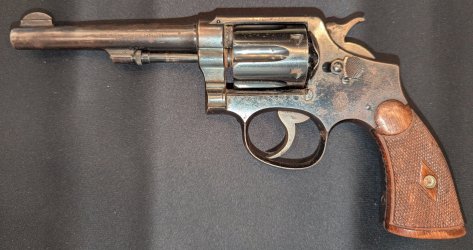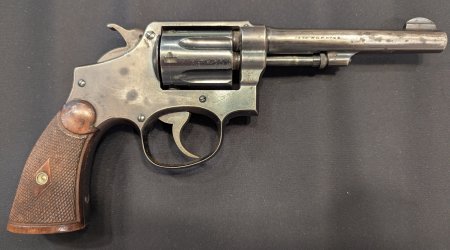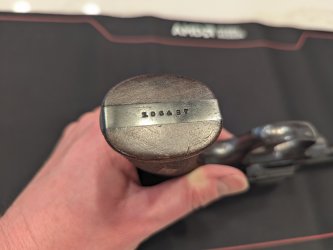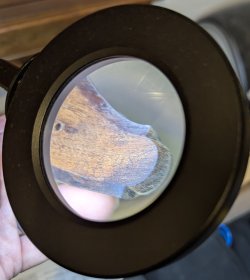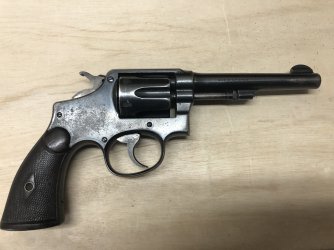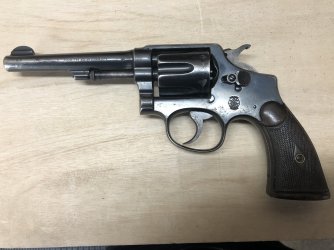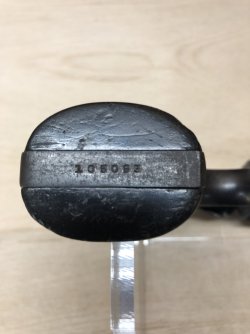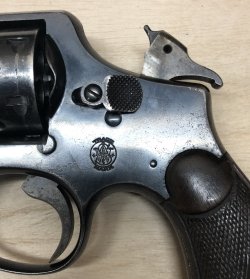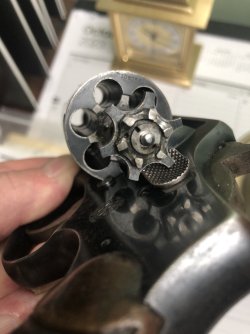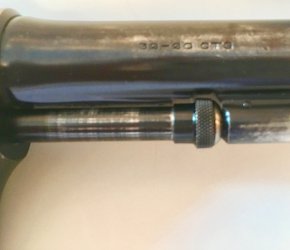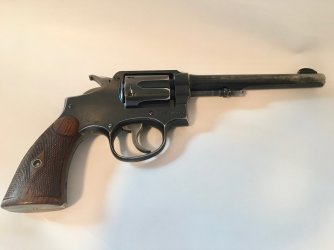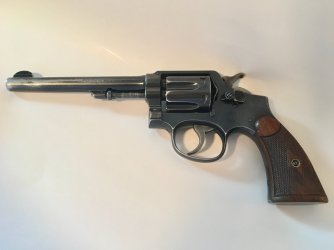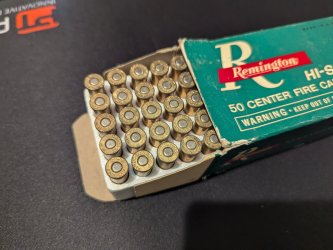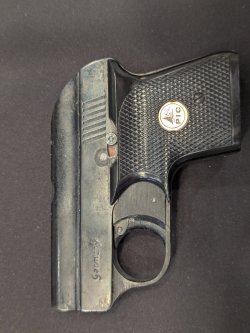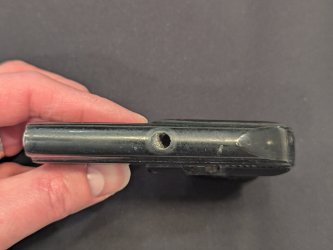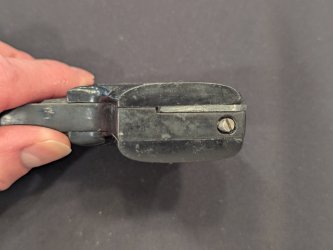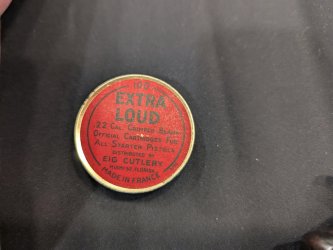I believe I've done all the research I can do on my own.
This forum has been an amazing resource, and I've taken notes from many other posts.
I believe the revolver is a Smith & Wesson .32-20 Hand Ejector of 1905, 4th Change, based on research I have done in this and other forums.
I've seen 1905 and M&P used a lot; could someone educate me on how to spot the difference?
Could someone provide me with an educated guess at the ship date range, please?
Barrel: 5"
Shots: 6
Type: Hand ejector
Sights: Fixed
Finish: Blue - I think... it is a lot worse off if it is Nickel
SN: 106487
The gun originally belonged to my wife's great-grandfather, who passed it down to her grandfather. His wife, my wife's grandmother, entrusted it to me for research and to get the gun out of their house.
My wife's grandfather is in his 90s and in some stage of Alzheimer's disease or dementia, which is why they wanted the gun out of the house. He knows I have the gun, and he asks about it every time he recognizes me, so he is still there to a degree. However, he also confuses us, including his wife of 75+ years (they married YOUNG), with his 5 previously passed siblings, other family members, strangers, etc. My point is that I've been rushing to gather the information while he still has moments of lucidity and before he is no longer with us.
It needs a good cleaning, but I can also see some rust, so I may take it somewhere rather than do it myself. It also appears that it may have previously been chemically treated for rust, at least I think I'm seeing past rust pitting and treatment.
My current plan is to give them my research and the SCSW, 5th ed., for Father's Day (a gift for the whole family, really). The information will go into the grandmother's family history binders, and the SCSW and gun will pass down to my mother-in-law, my wife, etc. I'll also assist them in requesting the "Factory Letter," but I know that will take some time to receive.
Any additional information is appreciated.
Thank you!
This forum has been an amazing resource, and I've taken notes from many other posts.
I believe the revolver is a Smith & Wesson .32-20 Hand Ejector of 1905, 4th Change, based on research I have done in this and other forums.
I've seen 1905 and M&P used a lot; could someone educate me on how to spot the difference?
Could someone provide me with an educated guess at the ship date range, please?
Barrel: 5"
Shots: 6
Type: Hand ejector
Sights: Fixed
Finish: Blue - I think... it is a lot worse off if it is Nickel
SN: 106487
The gun originally belonged to my wife's great-grandfather, who passed it down to her grandfather. His wife, my wife's grandmother, entrusted it to me for research and to get the gun out of their house.
My wife's grandfather is in his 90s and in some stage of Alzheimer's disease or dementia, which is why they wanted the gun out of the house. He knows I have the gun, and he asks about it every time he recognizes me, so he is still there to a degree. However, he also confuses us, including his wife of 75+ years (they married YOUNG), with his 5 previously passed siblings, other family members, strangers, etc. My point is that I've been rushing to gather the information while he still has moments of lucidity and before he is no longer with us.
It needs a good cleaning, but I can also see some rust, so I may take it somewhere rather than do it myself. It also appears that it may have previously been chemically treated for rust, at least I think I'm seeing past rust pitting and treatment.
My current plan is to give them my research and the SCSW, 5th ed., for Father's Day (a gift for the whole family, really). The information will go into the grandmother's family history binders, and the SCSW and gun will pass down to my mother-in-law, my wife, etc. I'll also assist them in requesting the "Factory Letter," but I know that will take some time to receive.
Any additional information is appreciated.
Thank you!

